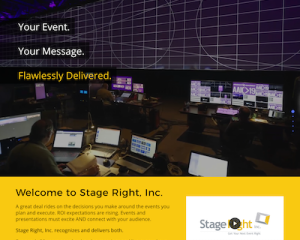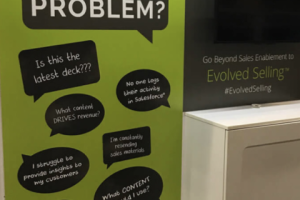
How do you understand and connect with your sales targets? Let us liberally paraphrase the old Greek philosophical maxim: “Know thy target audience.”
Because, in a way, knowing your target audience means knowing yourself. Understanding target audiences is vital to unlocking the success of your marketing campaigns and, as it goes, vital for business success.
By pinpointing your target audiences, your prospective marketing partner can craft marketing strategies that align with your customers’ needs, wants, and preferences. A focused approach leads to more effective campaigns. That, in turn, boosts sales, strengthens customer relationships, and ultimately drives business growth.
Now, we know understanding sales targets should be elemental to marketing, but we must address it, as some companies could do more.
You want your marketing to be efficient. By focusing on specific customer segments by title, you can allocate resources effectively, thus maximizing ROI.
What does your marketing mean to your target audience? Different titles care about different aspects of your offering. Can each relate to your brand story? It comes down to how relevant the messages are. Tailored marketing stories and sales pitches resonate better, increasing conversion rates.
And you’re no longer appealing to the masses. Personalized marketing helps you offer products and services that directly address specific audience needs.
Marketing differentiation can come from appealing to specific kinds of customers. This is where customer insights can deliver valuable understandings into their buying behavior.
By specializing in a particular customer segment(s) and better address customer pain points, businesses can establish a strong niche and differentiate themselves from competitors. Through this and a well-developed customer persona, you’ll appeal to the customers you want, and potentially stay ahead of competitors.
That work pays off in other ways in the future. Like building long-term relationships that drive customer satisfaction and loyalty.
So, how do you get all this customer intel? Combine research, analysis, and direct client engagement. And with past and prospective clients. Here are some effective methods in three simple categories:
The Customer
Digital Sources
Market Research
Sure, getting a handle on who you want to buy from you takes a bit of work. But the outputs from these discovery methods will help you differentiate your offer and position it in ways that strongly resonate with your audience.

Demanding an innovative departure from predictable product introductions, USG tapped Element-R to help unveil new, patented technology.
We created a high impact event for industry leaders by an industry leader, using several non-traditional elements to make the launch distinctive:
The event achieved the objectives of generating excitement around the new technology while seeding long-term market interest among the 70+ guests from 35 companies. The majority of survey respondents rated the event as outstanding.

In the early days of personalized medicine, few people understood the new science of pharmacogenetics – how medicines interact with an individual’s genes, often causing avoidable side effects. YouScript software by Genelex (now owned by Invitae) was a pioneering technology giving physicians detailed input on these interactions for the benefit of patients.
To gain industry media attention for the relatively unknown company, Element-R recommended a purely educational webinar for the media only. Delivered entirely by an M.D., the webinar effectively informed editors and reporters about the topic – with a bonus: several covered the burgeoning science and the company’s leadership in feature-length articles.

All high-end professional AV and event staging companies show off their best events to attract prospects. Stage Right, Inc. needed to revitalize its digital doorstep and deliver key differentiators.
Element-R created a new, from the ground up website that made the company stand out on two fronts. First, instead of simply showing off glitz, we organized and showcased its capabilities by category, allowing prospects to identify and pair their challenges with a clear solution. Second, we branded and spotlighted the company’s proprietary planning protocols, now known as StageCraft™. Stage Right, Inc. has a modern, responsive site that places its distinctive competencies out front.

When the nation’s oldest senior living community in the U.S. needed to reinvigorate its marketing, Element-R Partners helped Three Crowns Park play to its strengths in a crowded marketplace.
Through a deep dive with residents and staff, we developed messaging that appealed to retirees who don’t want to live in a cold institution or ritzy resort/hotel setting. The new website faithfully presents this welcoming and close-knit community of friendship and relaxed, suburban style living.

To meet a changing world of special education with funding and competitive challenges, the O-School needed to reacquaint its many publics about the organization’s mission and capabilities.
Interviewing staff and multiple influencer groups, Element-R developed a “messaging playbook” that served as the basis for all aspects of its external communication to encourage student enrollment and support funding. The backbone of this effort were two new websites, www.oschool.org and www.bw-center.org, creating a cohesive presence for the School in all of its materials, and bringing it into the 21st Century.
 Go bold! Evolved Selling™ software maker Mediafly offers a sophisticated content management and sales enablement solution to organizations worldwide. To really make a statement at its channel partners’ annual conferences, Dreamforce and Sapphire, Mediafly nixed the typical descriptive booth copy, instead drawing visitors in with bold problem statements its audience could relate to.
Go bold! Evolved Selling™ software maker Mediafly offers a sophisticated content management and sales enablement solution to organizations worldwide. To really make a statement at its channel partners’ annual conferences, Dreamforce and Sapphire, Mediafly nixed the typical descriptive booth copy, instead drawing visitors in with bold problem statements its audience could relate to.
Together with design partner DoubleTake Design, Element-R developed channel partner messaging and several alternative creative concepts for the booth. We couldn’t have been happier that Mediafly selected this unusual and compelling way to present itself. Traffic was steady at the booths as visitors walked up to say, “can you really solve that problem for us?” The creative concept continues to be used successfully to bring attention to Mediafly’s many capabilities – proving that B2B marketing doesn’t have to be boring!